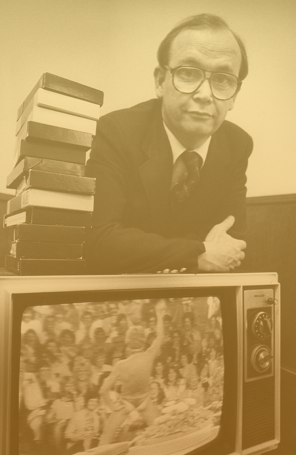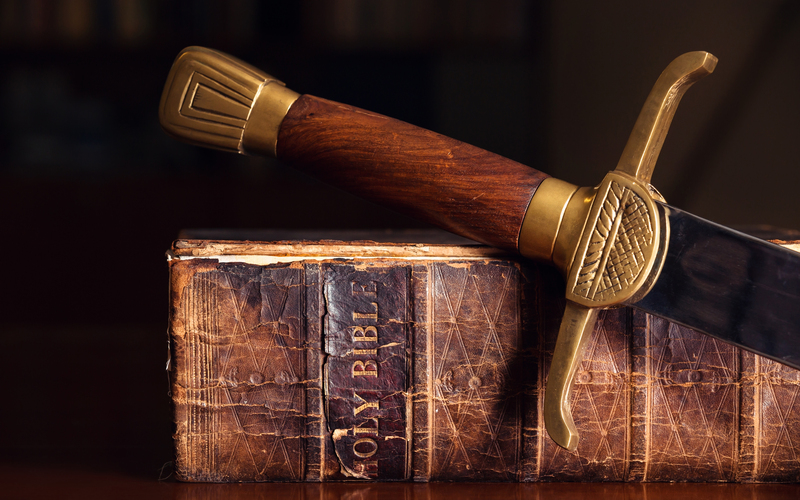A Message in the Dirt
Sign up for a six month free
trial of The Stand Magazine!
Last week was our first almost 90-degree day here in Northeast Mississippi. That can only mean one thing: Summer is coming!
Growing up before iPads and streaming networks, my siblings and I would go outside and soak up as much fresh air as possible on many spring and summer days. We would play hide-and-seek, swim in the pool, go fishing with our grandfather, play ball, catch lightning bugs, and engage in many other outdoor activities.
One of my most fond summer evening memories was spent with my siblings, playing in the mud. I specifically remember my parents working in the garden and the three of us making a huge mud puddle to play in. It was a mess, but we had the best time. Worrying about the mud caked in our hair? That was a worry for a different day.
But did you know just how big of a deal mud, dirt, and clay really are?
Some individuals pay big money to have mud baths. Google’s AI assistant explained that these luxury treatments can range from $50 to $1000 per experience. Other cultures use dirt as medicine, believing it can help heal and soothe pains. Nowadays, you can even buy Aztec clay for skincare in supermarkets. It is said to help draw out impurities and leave the skin looking healthier and clearer.
And don’t get me started on the fabulous Mississippi mud known as pottery!
These God-created, earth-giving materials are critical to our society and culture, whether they are a fun, messy outdoor activity for wild children or used in pottery and other forms.
But one instance involving dirt in the Bible has always captured my attention. It was none other than the woman caught in the act of adultery.
We find this story in John 8:1-5. It says,
Early in the morning He came again into the temple, and all the people were coming to Him; and He sat down and began to teach them. The scribes and the Pharisees *brought a woman caught in adultery, and having set her in the center of the court, they *said to Him, “Teacher, this woman has been caught in adultery, in the very act. Now in the Law Moses commanded us to stone such women; what then do You say?”
My first thoughts on this will always be … What about the man she was caught committing adultery with? Why wasn’t he also brought to be punished?
Those thoughts are shortly followed by thinking about how scared this woman must have been. She knew that she had sinned; she had chosen to do so. However, I’m sure that, living in that culture, she also knew what the Law of Moses was and what her punishment should be if she were found out. To top it all off, these “holy men” bring her before the man who claims to be the Messiah.
How terrifying a thought!
But instead of picking up that stone to throw, Jesus acted differently. He reached down and did something not even the Pharisees would have imagined – he wrote in the dirt.
Verse 6-8 says,
They were saying this, testing Him, so that they might have grounds for accusing Him. But Jesus stooped down and with His finger wrote on the ground. But when they persisted in asking Him, He straightened up, and said to them, “He who is without sin among you, let him be the first to throw a stone at her.” Again He stooped down and wrote on the ground.
Jesus knew the Pharisees were playing a trick on him, but instead of falling for their schemes, He met the scared woman right where she was and put those men in their place.
But the more I’ve thought about this story, the more I wonder what He wrote in the dirt. It’s a small line in the Bible, but it was important enough to include.
Did He tell her she was forgiven?
Was it a phrase like “You are loved?”
It could be a truth from the Old Testament. Or was it telling her what was to come?
Regardless of what He wrote, that woman knew that thanks to Jesus, she was given a second chance at life. At that moment, the former laws were set aside, and Jesus stooped down to meet this scared woman.
When she arose to look among her accusers, no one was left standing.
Straightening up, Jesus said to her, “Woman, where are they? Did no one condemn you?” She said, “No one, Lord.” And Jesus said, “I do not condemn you, either. Go. From now on sin no more.” (John 8:10-11)
Now, let me ask a different question.
If we stood among that crowd that day, would we be team Jesus or support and cheer on the scheming Pharisees?
Yes, this woman had committed a great sin. So had the man she was with, even though he wasn’t brought to the court that day. But instead of showing her love and trying to help her, these leaders and the individuals among them wanted to see her publicly pay for her sin. Some might have even started gathering rocks.
In our day-to-day lives, we come face-to-face with many hurting people. And some stories, we may know. We may know about the coworker who is sick or the friend who lost their baby. But what about those who are hiding the pain of a crumbling marriage, an addiction, or other sins that have ensnared them?
What would we do if we knew the sins they were hiding and struggling with? Of course, we shouldn’t accept and condone sin and actions that go against Scripture, but as believers, we can point the hurting to the one who makes all things new.
The Pharisees eagerly awaited the moment when they could expose this woman’s sin. Would the same be true of us? And while stoning is out of the question in modern-day America, would we be quick to judge and gossip about these hidden pains if they ever saw the light of day? Would we rush online to sling some verbal stones?
Jesus wouldn’t.
He would meet the hurting with grace right where they are … as should we.

Sign up for a free six-month trial of
The Stand Magazine!
Sign up for free to receive notable blogs delivered to your email weekly.



















